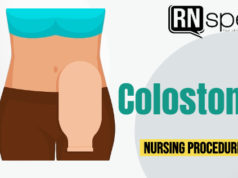Intramuscular (IM) injection is a type of venipuncture that is given into the central area of a certain muscle to distribute medication to the cardiovascular system by allowing it to be absorbed into the bloodstream at a faster rate and at a larger volume than an oral or intravenous medication would allow. It is sometimes referred to as ‘shots’. All healthcare workers who administer intramuscular injections to patients should receive training and education on proper administration. Selection of the needle size and injection site depends on many factors. These include age, size of the patient, and volume of medication. A syringe has three parts: the needle, the barrel, and the plunger. The needle goes into the muscle. It should be long enough to reach the muscle without penetrating the structures underneath. The barrel holds the medicine and has markings on it like a ruler. The markings are measured in millilitres (mL). The plunger is used to get medicine into and out of the syringe.
In administering IM injections, one must know where it is safe to inject. IM injections are usually given in the vastus lateralis muscle (thigh), the ventrogluteal muscle (hip), the deltoid muscle (upper arm muscle), and the dorsogluteal muscle (buttocks). The thigh is one of the most preferred sites especially for children under 3 years old. Thigh muscles or vastus lateralis muscle runs along the front side of your thigh, little towards the outer side. Feel the muscle by placing a thumb in the middle of the thigh and run a finger along the side. Divide the thighs from top to bottom into thirds. The middle third is where the injection will go.
A ventrogluteal muscle is the safest IM injection site for adults and children over seven months of age. It is deep and not close to any major blood vessels and nerves, and has the least chance for an injury to occur. When administering the shot, place the hand on the top of the thigh near the hip bone. The thumb should be placed at the groin, such that the wrist is in line with the thigh. The fingers need to be pointed towards the head. Form a V with your fingers by separating the index finger from the other three. Feel the edge of a bone along the tips of your little and ring fingers. The place to give the injection is in the middle of the V.
The deltoid in the arm is the site most typically used for vaccines and is popular for injections in adults due to its ease of access. The volume of medication that can be administered via this route is limited; an important consideration if a patient needs a large dose. To mark this site, place the palm of your hand on the shoulder and spread your thumb from the other 4 fingers in an upside down V shape. Make sure that the middle of the arm is centered in your V. Give the injection at the middle of the V.
The dorsogluteal muscle is the large muscle on the rear end or the buttocks. This is the region where most of the adults get their shots. Expose one buttock and wipe it with alcohol from the top of the crack from the cheeks to the side of the body. Then divide the buttock into quadrants halfway across and down the middle. Administer the medication at the site towards the hip in the upper outer quadrant.
As a general procedure, the practitioner must ensure that the patient is comfortable so as to keep the muscle relaxed. The IM injection site is cleaned with an alcohol swab and the skin is allowed to dry. Once the injection site on the deltoid has been located make sure to inject at a 90o angle with a darting movement. The syringe is often drawn back slightly to ensure that the needle has not penetrated a blood vessel. The needle is then withdrawn quickly and properly discarded. Apply light pressure to the injection site using a dry cotton ball or gauze. The patient is monitored for a short time for swelling, bleeding, or allergic reactions.



![Caring for Patients with Tracheostomy and Nursing Diagnoses [ Updates] tracheostomynursingprocedure](https://rnspeak.com/wp-content/uploads/2020/10/tracheostomynursingprocedure_725820712-238x178.jpg)



